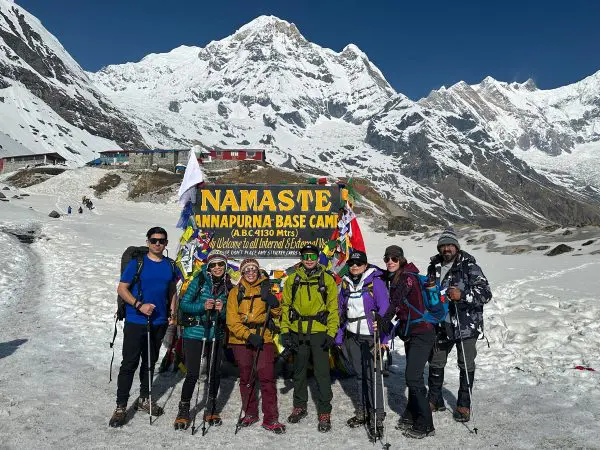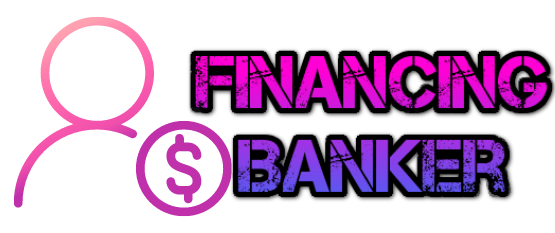
The Annapurna Base Camp Trek – trekking to ABC – is undeniably one of the most beautiful treks of Nepal. It leads you deep inside the heart of the Annapurna Sanctuary with the stunning panorama of the glaciated high mountains and the more intimate world of deep-green valleys with their terraced farms and the beautiful forest areas that are full of rhododendron and bamboo. Some of the common questions that trekkers wonder about while trying to trek to Annapurna Base Camp are: “What is the cost of Annapurna Base Camp?”
Annapurna Base Camp hike. The thing with the Annapurna Base Camp hike is that it can be a budget hike – you don’t have to pay to get a view of the Annapurna mountains. Regardless of whether you’re traveling as a solo budget backpacker or you want a guided trek and pampering, you can tailor the experience to suit your style of travel. Here, we have listed out the major costs related to the Annapurna Base Camp Trek to help you get your travel in place without any confusion.
Trekking Permits and Entry Fees
When doing the Annapurna Sanctuary trek, each of these trekkers would have had to obtain the 2 major permits, being the Annapurna Conservation Area Permit (ACAP) and the TIMS card (Trekkers’ Information Management System). These have been repeatedly tested along the trail and our required.
The ACAP is around 30 USD, and the TIMS will cost around 20 USD. If you are going through a trekking agency, they will usually take care of this for you. But if you are trekking alone, you can purchase these permits quite easily in Kathmandu or Pokhara.
And in summary, for permits, budget $50-60 USD per person total for permits. This is a one-time fee and mandatory for all trekkers.
Guide and Porter Services
You may or may not want to hire a guide or an entourage of trekking staff (eg, porters), especially if you’re not used to trekking at high altitude, but hire someone I would highly recommend. A guide who can make your travel a better experience with local knowledge, routing options, safety knowledge of the place, and its culture. Porters can carry your belongings, allowing you to put all of your work into the trek and save as much energy as you can.
Expect to pay a registered guide $25-35 USD per day, depending on his or her experience and whether you are hiring from a trekking agency or hiring them separately. Porters generally run from US$18 to US$25 per day, and they will transport up to 20-25 kg between two people.
If you’re doing the ever-popular 7–10 day Annapurna Base Camp Trek, then you can expect to pay anything from US$250–$500 for your guide and porter together. You can shave a bit off that number by sharing services with a small group of people.
Accommodation on the Trail
During your Annapurna Base Camp trek, you will be accommodated in trekkers’ lodges, es known as teahouses. These are simple local lodges with basic facilities. Lodging (unless you are at high altitudes) will be dirt cheap. Costs fall in the $3–6 USD per night range at lower elevations, but climb to $7–10 higher up (in particular after Himalaya and Deurali).
In some villages, your room price might be waived if you agree to have dinner and breakfast at that particular teahouse. These rates are for twin-sharing rooms featuring thin mattresses, shared toilets, and no heating — so pack a pair of long underwear and a sleeping bag.
Make alternative arrangements for about $50-80 USD total if you’re trekking for 8-10 days.
Food and Drinks on the Trail
A big portion of your budget is spent on your food expenses in the ABC trek route. So figure that anything that has to be brought up is going to get more expensive and more, you know, from porters or mules that are going up the mountain. At lower elevations, dishes cost between $4–8 USD, while above, they are $10–12 USD.
Typical menu items include dal bhat, which is rice with lentils and vegetables, fried noodles, pasta, momos, and several other types of soups. A breakfast of porridge, pancakes, or egg costs around $3–6 USD. Tea and coffee are readily available, $1–3 USD per cup.
Safe drinking water is essential, and if you are forced to purchase it but bring it with you, it may cost between $1–3 USD per liter at differing altitudes. Better to tote a reusable water bottle — with purification tablets, or a filter — of your own. You are authorized to boil water in almost any teahouse for a small fee.
While trekking to the Annapurna Base Camp, you will likely spend $20-30 USD per day on food and drink. For a 9-day trek, that’s 180-270 USD in total.
Getting to and from the Trail
The common place to begin the Annapurna Base Camp trek is from Nayapul, which is out there of Pokhara. There are ways to get there, of which the least expensive one is to rent a nearby jeep or taxi. A one-way private vehicle to Nayapul (which seats from 1-7) costs between $25-40 USD, depending on how big your group is and how good you are at haggling!
Some trekkers take the much cheaper local bus (3-5 USD) – not very comfortable, though. Should you end the trek at Jhinu Danda or Siwai, you may need to split a jeep ride with others back to Pokhara.
Budget about $40–60round-tripp for transportation.
Equipment and Gear Rentals: If you are not bringing your equipment, you can rent the equipment you need in Kathmandu or Pokhara. At the very least, that includes warm jackets, sleeping bags, trekking poles, and some decent boots — all of which are available for affordable prices. Rates range from $1–3 USD per item per day. Let’s say on a ten-day hike, one might have to spend 30-50$ renting things. But good quality socks, a good quality down jacket, as a minimum, and some layering is something your money should go into; it drops well below freezing at Annapurna Base Camp, especially first thing in the morning.
Travel insurance. While it is not obligatory for every point, all trekking insurance up to 4,500m should be provided. High-altitude helicopter rescue is a very expensive deal. Minimal trekking insurance coverage with optional high-altitude coverage should be under $50-100 USD, depending on the company and length of insurance. But it’s not something to be overlooked; the peace of mind is worth it, especially when trekking in high-altitude locations such as the Annapurna Base Camp trek.
Extras You will also need to budget for extras such as Wi-Fi, electric charging, snacks, and guide/porter tips or hot water showers. Wi-Fi: available at a fee of + $3-5 USD at some teahouses and electric load for your phones and cameras at $1-3 USD per hour. Re: Tips – It’s a little looser in Nepal, if you’re happy with your guide/porter, then 10-15% of the guide/porter fee is normal. Clampetts – Thanks!
The cost of the entire Annapurna Base Camp Trek could fall on the lower side or higher side if, for instance, you wanted to go on the trek all alone, i.e., carry your stuff and calculate the budget in this manner. At the same time, if you will need a bit of TLC with a nicer place to stay for the night and a guide to help with trekking to minimize some stress, it will be at the higher end of the range.
Final Thoughts
The Trekking in Nepal is not just an adventure, but it’s an enjoy you may cherish till the end of time! Expenses additionally range, so it depends on what you need, even though it is one of the most inexpensive high-altitude treks in the Himalayas.
You will be enchanted by the natural beauty, be it the flora and fauna or the enchanting mountain views, the notorious physical nature of the heart-warming locals, or the spiritual tranquility that you get to savour in the Annapurna Sanctuary—the Annapurna Base Camp Trek cost will feel puny compared to the memories you get to take back home.
